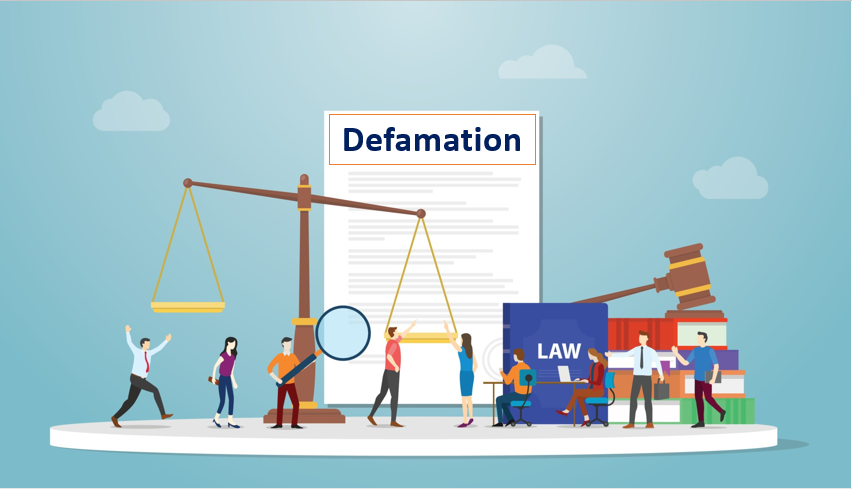Published On: 27th June, 2024
Authored By: Shri Ganarchit. B
ICFAI Hyderabad
The Doctrine of Separation of Powers: Balancing Authority for Functional DOCTRINE OF CHECKS AND BALANCES
Introduction
The doctrine of separation of powers is a fundamental concept that underpins the structure of many democratic governments around the world. It emphasizes the division of governmental responsibilities into distinct branches – the legislative, executive, and judicial – each with its powers and responsibilities. This principle serves to prevent the abuse of power by any one branch and ensure a system of checks and balances.
Historical Origins
The concept of the separation of powers can be traced back to ancient civilizations such as ancient Greece and Rome. However, it was the French philosopher Montesquieu who popularized the idea in his seminal work, “The Spirit of the Laws,” published in 1748. Montesquieu advocated for the separation of powers as a means to prevent tyranny and promote liberty within government.
Understanding the Branches of Government
- Legislative Branch: The crucial role of the legislative branch is to craft the laws that govern our nation. Through a bicameral legislature, such as a parliament or congress, elected representatives engage in debates and pass vital laws for the country.
- Executive Branch: The executive branch plays a pivotal role in implementing and enforcing the laws established by the legislative branch. Led by the president, prime minister, or a similar executive leader, this branch oversees government agencies and departments to ensure the effective execution of laws.
- Judicial Branch: The essential function of the judicial branch is to interpret laws and safeguard their constitutionality. With its courts and judges, this branch resolves disputes, upholds the rule of law, and provides critical checks and balances on the actions of the other branches.
Benefits and Challenges
Benefits
– Checks and Balances: The separation of powers prevents the concentration of authority in one branch, reducing the risk of abuse of power.
– The principle of accountability ensures that each branch of government is responsible for its actions and is held answerable by the other branches. This fosters transparency and upholds a system of checks and balances within the government.
– Independence: By delineating the powers of each branch, the doctrine maintains the independence of the judiciary and ensures impartial decision-making.
Challenges
– Gridlock: The system of checks and balances can sometimes lead to governmental gridlock if branches fail to cooperate or compromise.
– Overlap of Powers: There may be instances where the powers of different branches overlap, leading to conflicts over jurisdiction and authority.
– Erosion of Checks: In practice, some governments may erode the separation of powers through actions that undermine the independence of the judiciary or the balance of powers.
The Doctrine of Separation of Powers
The doctrine of separation of powers is a cornerstone of modern democratic governance, designed to safeguard against tyranny and protect individual freedoms. While challenges exist in its application, the balance of power it provides remains crucial for a functioning democracy. By upholding the principles of separation of powers, societies can strive towards a more just and equitable system of governance.
- Separation of powers is the division of the legislative, executive, and judicial functions of government.
- Since the sanction of all three branches is required for the making, executing, and administering of laws, it minimizes the possibility of arbitrary excesses by the government.
- The system of checks and balances is crucial to prevent the concentration of excessive power by any branch of the government.
- Instruments of checks and balances include legislative control over the judiciary and executive, executive control over the judiciary and legislature, and judicial control over the executive and legislature.
The current weakening of the system is due to weak opposition, decreased legislative scrutiny, and a judicial aversion to checks and balances. It is important to address the judiciary’s activism, executive excesses, and the need for legislative impact assessment and oversight to maintain the system of checks and balances.
One way to strengthen the role of the opposition is by establishing a shadow cabinet in India.
The Shadow Cabinet represents an essential balancing institution established by the opposition party with the purpose of preparing for future ministerial responsibilities and providing a counterweight to the ruling cabinet. It aims to ensure the existence of a robust and competent alternative to the current government. The judiciary, particularly the Supreme Court, is tasked with setting a prime example by advocating for transparency and accountability, thereby ensuring compliance with constitutional morality. The doctrine of separation of powers delineates government functions into the legislative, executive, and judicial branches, thereby fortifying checks and balances and safeguarding individual liberties. The legislative branch is responsible for legislating and holding the executive branch accountable through mechanisms such as question time and impeachment powers. The executive branch is charged with implementing and enforcing laws, appointing judges, and relying on recommendations for judicial appointments. Simultaneously, the judicial branch interprets laws, resolves disputes, and possesses the power of judicial review to invalidate laws or executive actions that are unconstitutional.
Conclusion:
The separation of powers is a crucial fundamental principle in democratic governance. Its implementation prevents the accumulation of power in a single branch, which may lead to authoritarianism or tyranny. Additionally, this system establishes checks and balances among the branches, ensuring that each branch has a say in the decisions and actions of the others. Through this structure, accountability is upheld, and fair governance is promoted. Repeated interventions of one organ into another’s functioning can diminish the faith of the people in the integrity, quality, and efficiency of the other organs. It also undermines the spirit of democracy as too much accumulation of powers in organs of government undermines the principle of check and balance.
The doctrine of checks and balances prevents any branch of government from becoming too powerful and ensures they fulfill their constitutional obligations.
- It involves procedures to reduce errors, prevent improper functioning, and decrease the risk of centralized power.
- The Indian Constitution incorporates provisions for checks and balances.
- The separation of powers divides the state’s powers into legislative, executive, and judicial branches, while checks and balances maintain this division.
- The Indian Constitution does not strictly adhere to the separation of powers and instead relies on the principle of checks and balances to prevent unchecked power and avoid autocracy.
References:
- https://heinonline.org/hol-cgi bin/get_pdf.cgi?handle=hein.journals/injloitd2§ion=96
- https://www.drishtiias.com/daily-updates/daily-news-editorials/checks-balances-1
- https://vajiramandravi.com/quest-upsc-notes/doctrine-of-checks-and-balances/
- https://byjus.com/free-ias-prep/separation-power-indian-constitution/
Citations:
- Blaustein, G., & Flanz, G. (2011). Constitutive Documents of the United Nations: Constitutive Instruments, Judicial Decisions, and Other Relevant Documents. Martinus Neuhoff Publishers.
- Kimber, R. (2015). The Separation of Powers in Practice. Sydney Law Review, 37(3), 377-399.
- Sharma, S. K., Sharma, P., & Basandrai, K. (2019). Doctrine of Separation of Powers: An Overview. International Journal of Interdisciplinary Research and Innovations, 7(7), 1-3.


